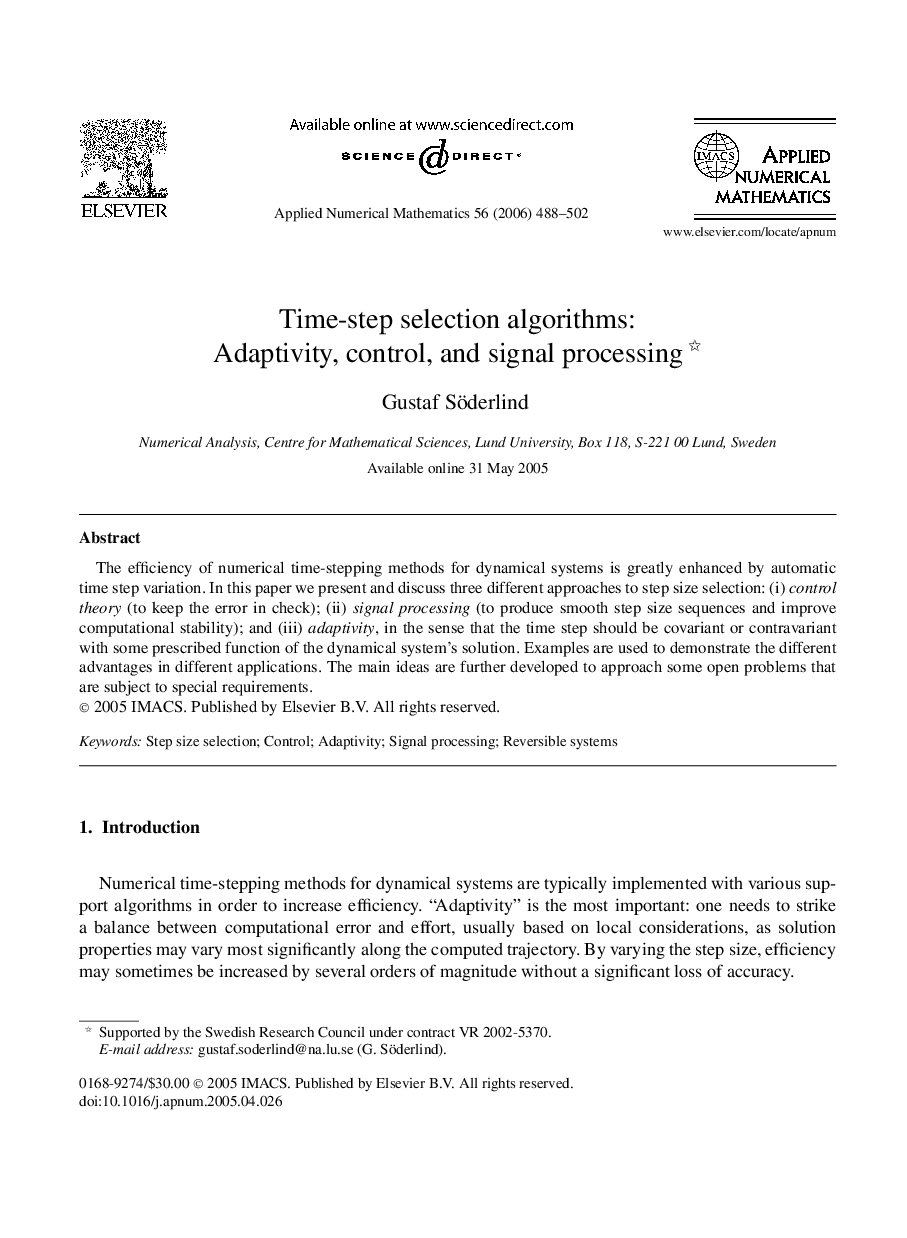| Article ID | Journal | Published Year | Pages | File Type |
|---|---|---|---|---|
| 4646287 | Applied Numerical Mathematics | 2006 | 15 Pages |
Abstract
The efficiency of numerical time-stepping methods for dynamical systems is greatly enhanced by automatic time step variation. In this paper we present and discuss three different approaches to step size selection: (i) control theory (to keep the error in check); (ii) signal processing (to produce smooth step size sequences and improve computational stability); and (iii) adaptivity, in the sense that the time step should be covariant or contravariant with some prescribed function of the dynamical system's solution. Examples are used to demonstrate the different advantages in different applications. The main ideas are further developed to approach some open problems that are subject to special requirements.
Related Topics
Physical Sciences and Engineering
Mathematics
Computational Mathematics
